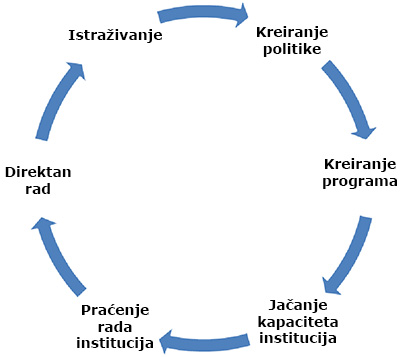Hotline: +381 61 63 84 071
Prevention of human trafficking and exploitation

Discovering causes is the first and essential step in creating functional and effective responses both to the very existence of the causes, and to the restoration of their consequences. In this regard, there are two main directions that prevention programs are facing: one refers to reducing or possibly removing the cause altogether, and the other refers to the rehabilitation of individual, group or general social consequences that have occurred as a result of human trafficking. Practice, however, shows that the majority of prevention programs is directed to the elimination of actual or anticipated consequences, both through work with the victims of human trafficking, and the broader population.
In the past few years, key prevention programs (organized and supported primarily by civil society organizations, media), directed toward the general population, were in educational and informational purposes only (seminars, round tables, different trainings...). Target groups of these programs are professionals in the field of the protection of potential victims, as well as victims of human trafficking, social workers, court staff, the police, educational workers, volunteers in non-governmental organizations and other interested community groups, but also representatives of vulnerable populations - residents of shelters, and beneficiaries of the assistance and support program.
However, in addition to the obvious result of these activities - increase in the number of victims identified by professionals, other benefits of such programs of preventive measures are almost non-existent. Therefore, it is important that the future work in this area includes formulating implementation standards, but also clear requirements regarding the effects to be achieved. Also, it is necessary to continuously monitor these issues and further research, given that the causes, types of exploitation, structure of the victims and the relationship of victims and general population toward human trafficking change with the changes of wider social circumstances, but also given the variable (lack of) success in identifying the causes and elimination of consequences. Activities must therefore be systematically carried out, with a clear order and relationship between them, as can be seen from the proposed model.












 FACEBOOK
FACEBOOK TWITTER
TWITTER YOUTUBE
YOUTUBE